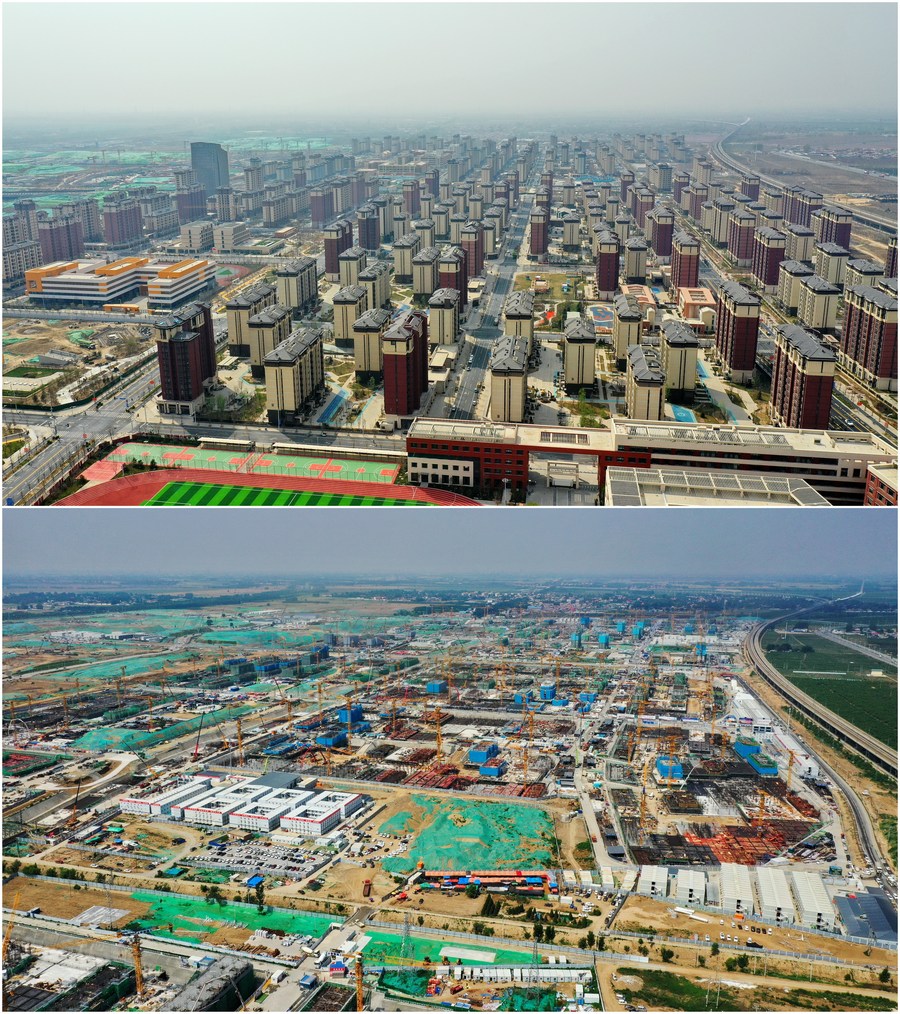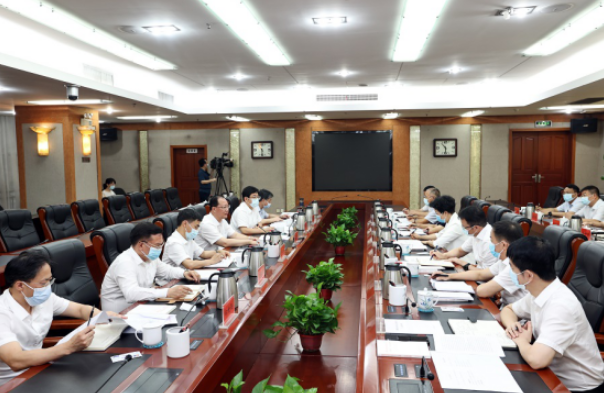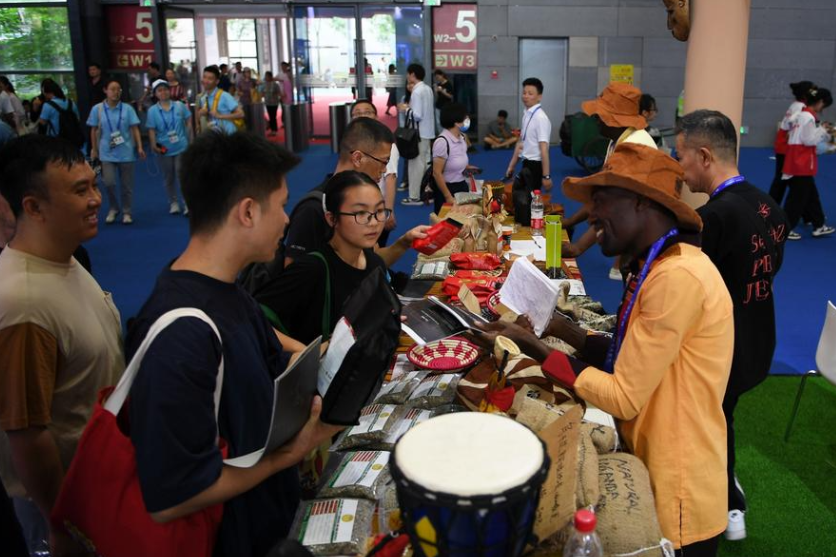This combo photo shows the aerial view of the Rongxi area on March 31, 2023 (up) and the construction site of it on July 3, 2021 in Xiong'an New Area, north China's Hebei Province. (Xinhua/Mu Yu) BEIJING, April 2 (Xinhua) -- The highly-anticipated "city of the future," Xiong'an New Area, is swiftly taking shape as it witnesses the culmination of all-out efforts to crystallize a grand vision that was formulated six years ago. On April 1, 2017, China announced plans to establish the new area in Hebei Province, to relieve Beijing of functions non-essential to its role as the national capital and advance the coordinated development of the Beijing-Tianjin-Hebei region. For a city whose establishment will carry "lasting importance for the millennium to come," China's central authorities have stressed the importance of planning, saying "every inch of land should be clearly planned before construction." More than 200 teams and over 3,500 experts from China and abroad participated in drafting the blueprint for the new area. Now, that blueprint is gradually turning into reality. With the opening of an intercity railway, travel time between Beijing West Railway Station to Xiong'an has been cut from nearly 1.5 hours to about 50 minutes. A fast train takes only 19 minutes to run from Beijing Daxing International Airport, another key project for the coordinated development of the Beijing-Tianjin-Hebei region, to Xiong'an. Inside the 47.6-km underground tunnels, infrastructure facilities for electricity, communication, heating, gas and water supply have been installed. These facilities are equipped with nearly 10,000 sets of sensors to support full-range video surveillance and monitoring of the equipment. China's centrally-administered state-owned enterprises (SOEs) have set up more than 140 subsidiaries and branches in the area. Construction of headquarter buildings of big SOEs like Sinochem Holdings, China Satellite Network Group and China Huaneng Group have entered different phases. Also, to provide quality public services, Beijing-based universities, hospitals, and schools are building or will build branches in Xiong'an. They are also establishing partnerships with their counterparts in Xiong'an. Toward the end of 2022, the computing center of Xiong'an city, known as the city's brain, became operational. It offers network, computing and storage services for big data, blockchain and Internet of Things. China's leadership has pledged to build Xiong'an into an innovative, green, smart, and world-class city with blue skies, fresh air, and clean water, in line with the country's high-quality development path. The Baiyangdian Lake, the largest wetland ecosystem in northern China, is located in Xiong'an. After the establishment of the new area, the water quality in Baiyangdian has been improved from Level V, the lowest of China's five-tier water assessment system, to Level III. The species of birds in the lake area has also increased to 252, 46 more than before. Over 31,000 hectares of afforestation have been implemented with over 23 million nursery-grown plants in the area, increasing its forest coverage rate to 34 percent and lowering the average level of PM2.5 by 37 percent. According to the urban planning outline, citizens of Xiong'an will need to travel no further than 300 meters from their homes to reach a park, a tree belt within 1 km, and a forest within 3 km. Xiong'an has been exploring different ways to meet the aspiration of normal people to live a better life, which is also the goal of China's future urbanization, said Li Xiaojiang, an expert with an advisory committee on the coordinated development of the Beijing-Tianjin-Hebei region. Last but not the least, attracting talent has been crucial to the construction of Xiong'an. Zhu Ninghua, director of Xiong'an innovation and research institute under the Chinese Academy of Sciences, has recently received a "Xiong'an talent card," which entitles him to benefits concerning household registration, traffic, health care and children's education. A total of 3774 people, all of them talent urgently needed by Xiong'an, have received such cards so far. Tang Puliang, head of the working team for attraction of talent in Xiong'an, said the city has attracted 12 leading experts, over 100 talent in key areas, and over 3,000 graduates from major Chinese universities.
"City of the future" taking shape in Xiong'an
Editor:谭婕倪
Source:Xinhua
Updated:2023-04-03 10:57:22
Source:Xinhua
Updated:2023-04-03 10:57:22
Special
Contact
Welcome to English Channel! Any suggestion, welcome.Tel:0731-82965627
lisl@rednet.cn
zhouqian@rednet.cn











